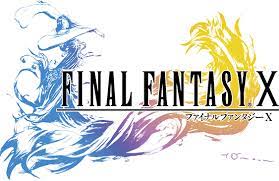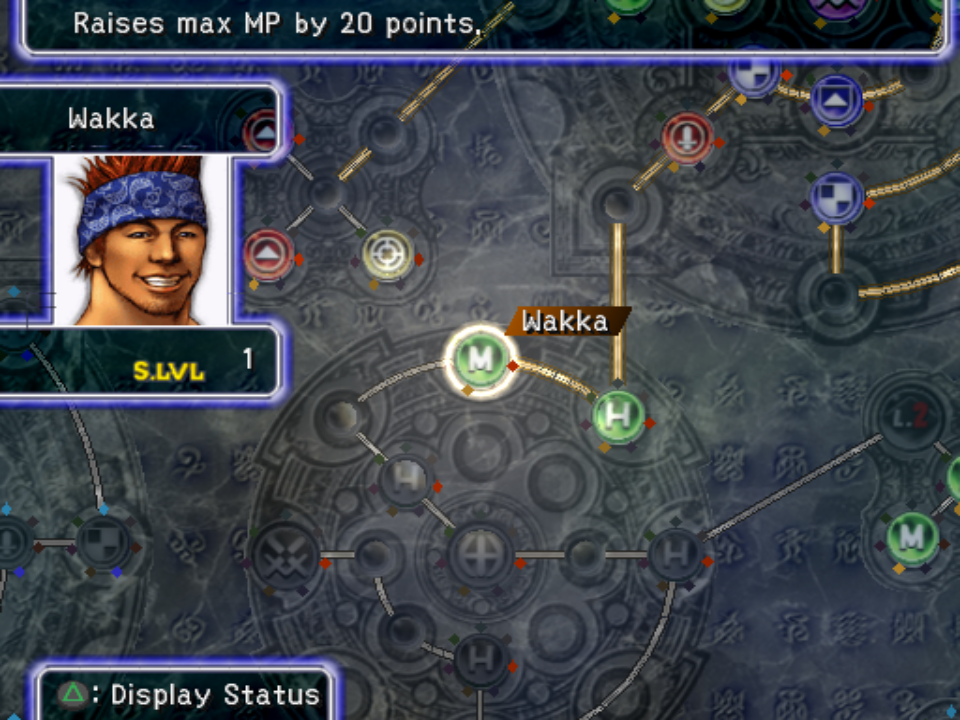Final Fantasy X 20 Years Later

History
I’ll always hold Final Fantasy X (FFX) as my first “real” game that I played as a kid (I was 8!). FFX was very different from Banjo and Kazooie, or Jak and Daxter. From every intentional note of “Zanarkand” to the mystique of being introduced to characters that wouldn’t be referenced again for 30 hours (I’m looking at you Auron and the kid in the opening scene). But I do think that looking back that’s a bit of a misnomer. This was really the first game that I played with a mature story. I never was able to beat FFX as a kid, and recently I’ve had the itch to go back. I want to share some thoughts on FFX 20 years later. I’m writing this not as a review, but as a way of reflecting on my experience with FFX.
Where is the fun?
Fun in FFX comes from your typical RPG tropes. The numbers go up, the enemies are pure Final Fantasy camp (killing gods never gets old), the systems are layered on and interesting. But beyond that, the story is pretty fast paced and easy to follow. The Sphere grid is an innovative take on leveling since there are no levels here, just sphere to tech into. This makes random stat upgrades seem really deliberate and feels fresh. Finally, the Conditional Turn Based combat system is dynamic from turn to turn and fights can feel different while maintaining the core systems. If any of that interests you, I’d recommend trying out FFX if you’ve never played it.
The following contains gameplay, mechanic, and story spoilers for FFX.
Gameplay
I came into this run of FFX with the expectation that I wanted to get in and get out with as fresh of a perspective as possible. I didn’t use a guide for anything more than getting explanations for mechanics when the tooltips were too sparse or to check how far along I was in the story. I also didn’t really want to grind so if I died to a boss, I would come at it with a different or refined strategy, unless I was out of ideas. I also expected that this game would take me about 45 hours and figured I would casually play it over a few weeks. Boy was I wrong, because I binged the whole thing beginning to end in just under 7 days.
The main gameplay loop is standard jrpg (visit a new town, traverse a dungeon and beat a boss or 2 along the way), but some ‘dungeons’ were really just traveling to a place that happened to have a boss. In fact there were really no dungeons in this game, just traveling with bosses along the way. This made a lot of sense since we’re following Yuna on her pilgrimage to the different temples. Each temple has a puzzle room or two (with no random encounters). Every puzzle felt like it had to be brute forced EXCEPT the ice puzzle because there was actually a logic behind it.
Combat
One of the best parts about FFX is the combat system and you get pretty cozy with it since you’ll be in battles A LOT. There’s a big incentive to swap party members in and out to leverage a party member’s strength. This was encouraged because the FF devs made this action completely free, which opened up some tricks where you could have a specific character always have their turn right before an enemy. I really liked this compared to the Shin Megami Tensei break system from Persona or Octopath traveler. You pretty much always had a counter available in your party which meant that you didn’t have to spend time outside of battle shoring up weaknesses.
I also liked how your characters are really rewarded for leveling up. Whenever you get to a new zone, your counter for a random enemy might be just out of range to be 1 shot. But by the end of the zone you’d almost always hit that bar. It always felt like significant progression.

Turn order is displayed in upper right hand corner. CTB Battle system allows a character to make multiple moves in a row.
I really enjoyed the Conditional Turn Based Battle System in FFX. Rather than having a turn where everyone gets to go and your character’s speed determines who goes first in the order (think: Pokemon). In FFX, your character’s speed affects how long it takes for them to go again. So you could have a faster character like Tidus make 2 or 3 moves between every enemy’s move. Also certain moves take longer to recharge. For example Firaga (Fire 3) takes longer to recharge than Fire (Fire 1), so there’s an incentive to use a smaller spell if you only need a smaller spell, whereas in other games mana efficiency is the incentive, but it never ends up being important late game.I think this system works really well, but its biggest downside is that to be successful, you really have to exploit it as much as possible with Haste and Slow spells. There are bosses late game that are immune to Slow and remove Haste and honestly those felt the most balanced and challenging.

The Sphere Grid system removed random stat gains and always got me excited to move 3 spheres forward. I really loved this system and wish it was more prevalent in games, albeit a little simplified. It also got me excited about hitting a strength boost for Wakka/Tidus/Auron because 4 strength is HUGE in this game.
As far as bosses are concerned, JRPGs always have 3 different kinds, puzzle bosses, standard bosses, and damage checks. There was only one instance of the latter and it really only occurred at the end of the game, which gave you the confidence that your characters were strong enough to beat the game (I’m not sure if this was actually true, but it felt like it). The puzzle bosses were interesting, most of them felt like you could figure them out after a few turns of trial and error, watching patterns. If you did need more time and ended up dying, the cutscenes around them were pretty quick. The puzzle bosses were way more interesting than the actual puzzle dungeons.
I think going into the last boss, I was severely underleveled because the first time I died, it didn’t feel close. I contemplated just giving up and watching the end on YouTube. After looking at guides and seeing the builds that they had suggested, it was very apparent that you were expected to be at the end of the sphere grid for almost every party member and I had only hit the end for Auron. I decided to just try and refine my strategy and after 4 hours of trying and failing (most of the time was because unskippable cutscenes took no joke 25 minutes), I finally came to a strategy that worked and I felt like I had to really master and understand the systems to do so. The last hit using Bahamut’s Limit break was extremely satisfying and filled me with adrenaline.
Story and Score
“Why am I crying in the club right now?” was a common quote between my girlfriend and myself while playing through FFX. When I came across Yuna’s record that played back her journey from the beginning from her perspective, I really could feel how far we’ve come. I had a real connection to these characters and the struggles that they were going/had been through. I’m a real sucker for these kinds of moments of reflection at the end of a journey and to put it in perspective, I was watching that cutscene at 7:30 am while riding my indoor bike and I was BAWLING.
FFX was a page turner. It wasn’t overly complicated and didn’t have wild plot twists, but it was engaging to the point where you just wanted to see what you knew would happen next. Even if there were some faults in the story (basically Seymour) it was really great.
As far as themes, Wakka, who I remembered to be a huge goofball and noncharacter at the age of 8, was the core vehicle for the exploration of concepts. He has a blind trust in religion that is challenged at every stage in the story. In addition, he has a blind hatred towards the Al Bhed because he believes they are the reason his brother passed. Although there is only a build of tolerance and understanding, Wakka doesn’t really change as a person. How the other characters react to his flat views is really interesting and made me think about how I handle people in my life that show hints of racism or insensitivity.
Wakka also deals with the conflict between their religion banning technology. Every time it’s introduced, he deplores its use. As the character’s journey advances, he learns the reason for the religion’s opinion that technology is bad, is to concentrate power in the capital. The gang realizes the intent is not pure and begins rethinking their view on Machina, even using it as the main way to defeat Sin and opening up opportunities that did not exist before. It’s interesting to see that once they apply the socratic method on their beliefs, Wakka begins to discover that what he believed to be true was merely an illusion.
The score in FFX is GAS and covers a pretty good range of emotions, from uneasy eeriness, to “down to business” battle themes, to complete tear jerkers from hearing just a few notes. I went back and listened to the entire score and felt I had to capture these in playlists to bring me back to the highs and lows of this game every time I heard them. This isn’t just Hymn of the Fayth or Zanarkand, the battle music and world zone tracks also perfectly captured the essence of the feeling you had in those zones. You can view my video game playlists here.
Takeaways
One of the ideas that I’ve been grappling with recently has been around moving on from games. One of my friends says that when he finishes a good story, he grieves for a day or two. I definitely get this, it’s hard to pick up a new story after having such an electric experience. As I mentioned at the top, this is a way of processing these kinds of experiences. Besides writing my thoughts down, I also took the time to listen to the entire score and move noteworthy pieces to a playlist. This allows me to have a ‘souvenir’ for FFX where I can transport myself back to Spira at any time.
Overall I really loved the experience that was FFX and I think it will always be a game that’s shaped me, whether I knew it or not.
